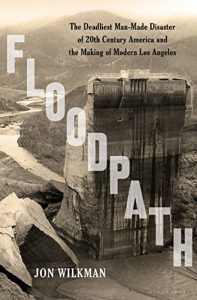Just before midnight on March 12, 1928, the St. Francis Dam, a twenty-story-high concrete structure just fifty miles north of Los Angeles, suddenly collapsed, releasing a devastating flood that roared fifty-four miles to the Pacific Ocean, destroying everything in its path. It was a horrific catastrophe, yet one which today is virtually forgotten.
With research gathered over more than two decades, award-winning writer and filmmaker Jon Wilkman revisits the deluge that claimed nearly five hundred lives. A key figure is William Mulholland, the self-taught engineer who created an unprecedented water system, allowing Los Angeles to become America's second-largest city, and who was also responsible for the design and construction of the St. Francis Dam.
Driven by eyewitness accounts and combining urban history with a life-and-death drama and a technological detective story, Floodpath grippingly reanimates the reality behind L.A. noir fictions such as the classic film Chinatown. In an era of climate change, increasing demand on water resources, and a neglected American infrastructure, the tragedy of the St. Francis Dam has never been more relevant.
With research gathered over more than two decades, award-winning writer and filmmaker Jon Wilkman revisits the deluge that claimed nearly five hundred lives. A key figure is William Mulholland, the self-taught engineer who created an unprecedented water system, allowing Los Angeles to become America's second-largest city, and who was also responsible for the design and construction of the St. Francis Dam.
Driven by eyewitness accounts and combining urban history with a life-and-death drama and a technological detective story, Floodpath grippingly reanimates the reality behind L.A. noir fictions such as the classic film Chinatown. In an era of climate change, increasing demand on water resources, and a neglected American infrastructure, the tragedy of the St. Francis Dam has never been more relevant.



